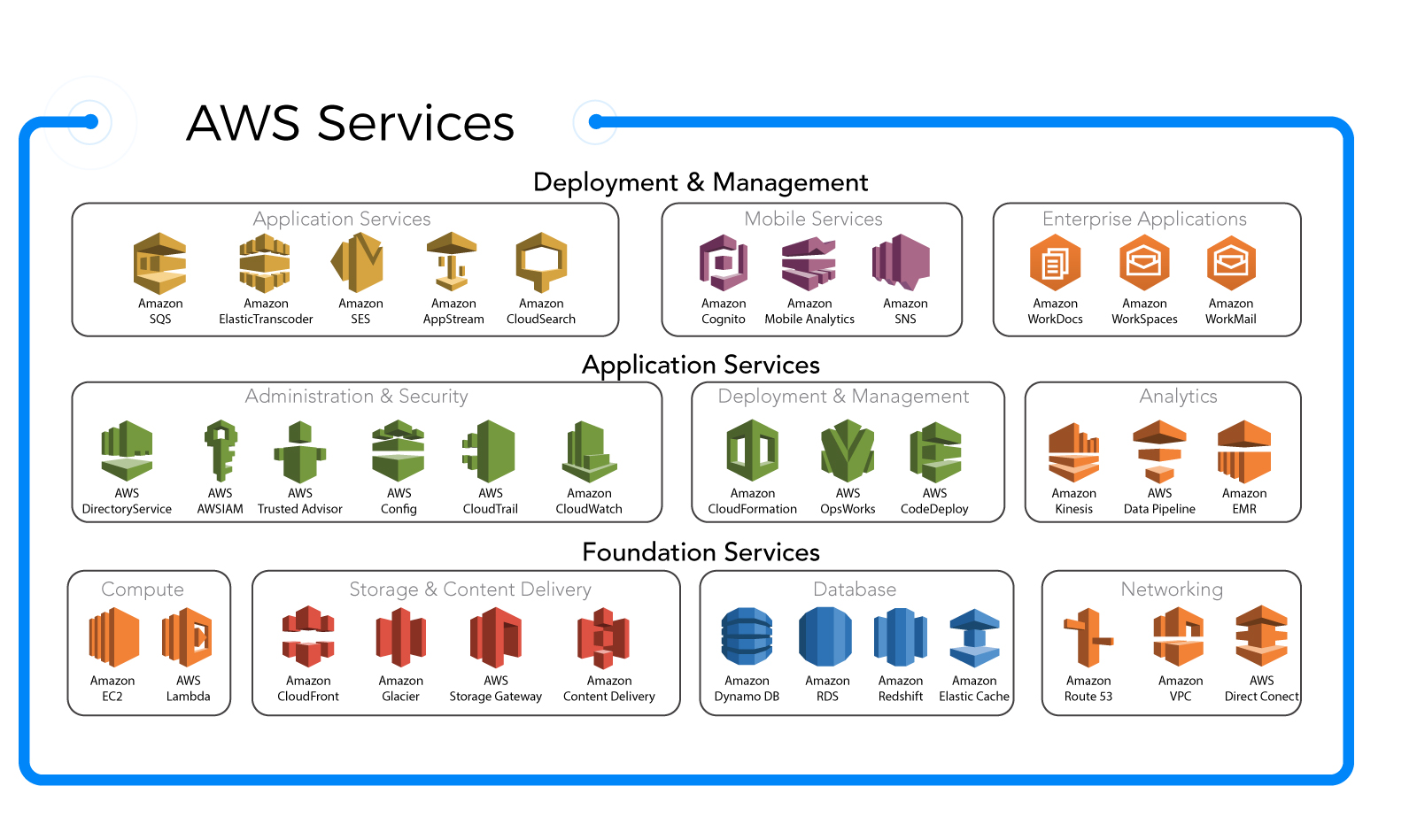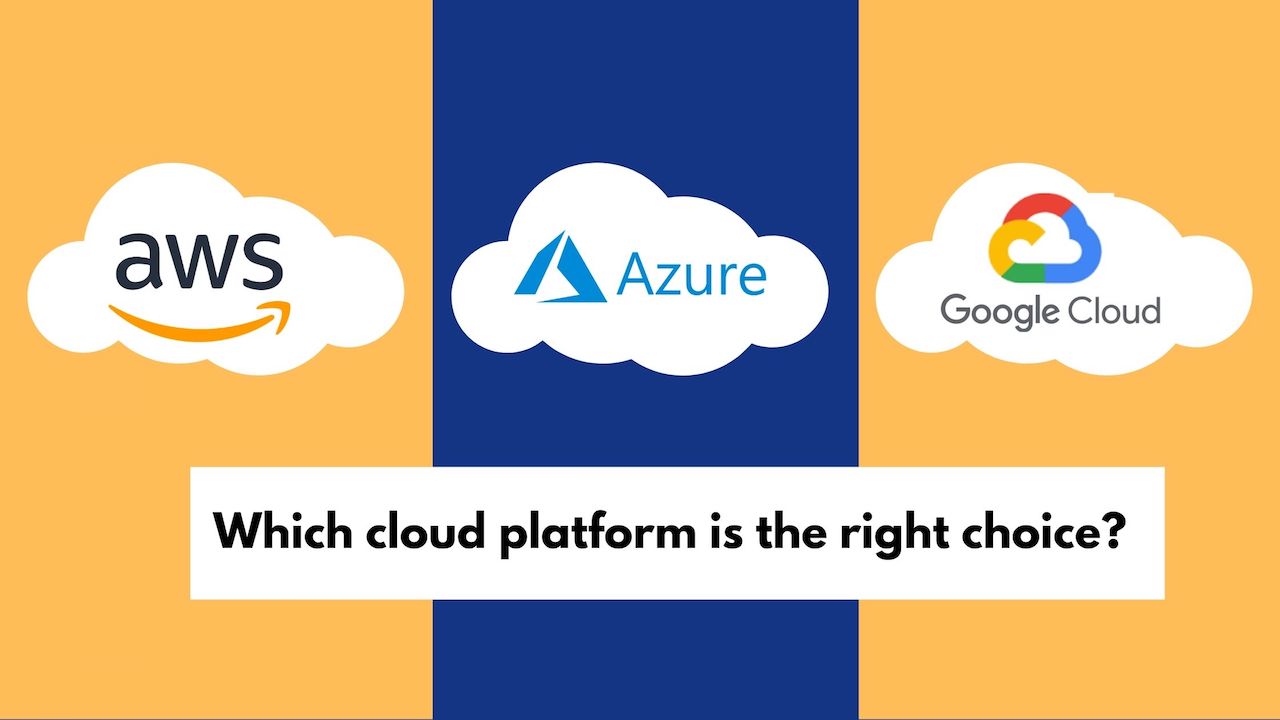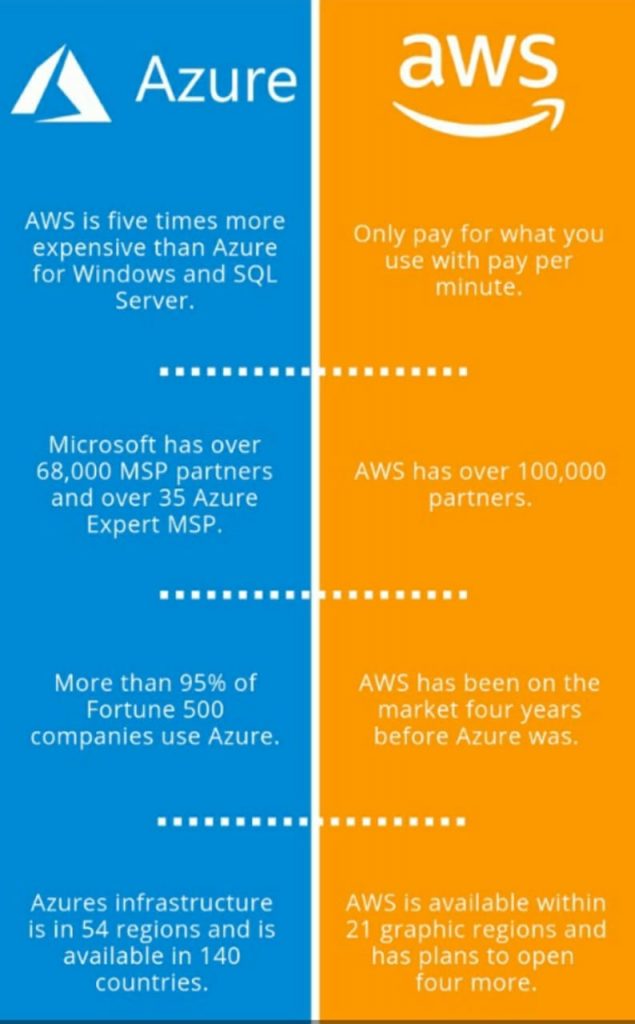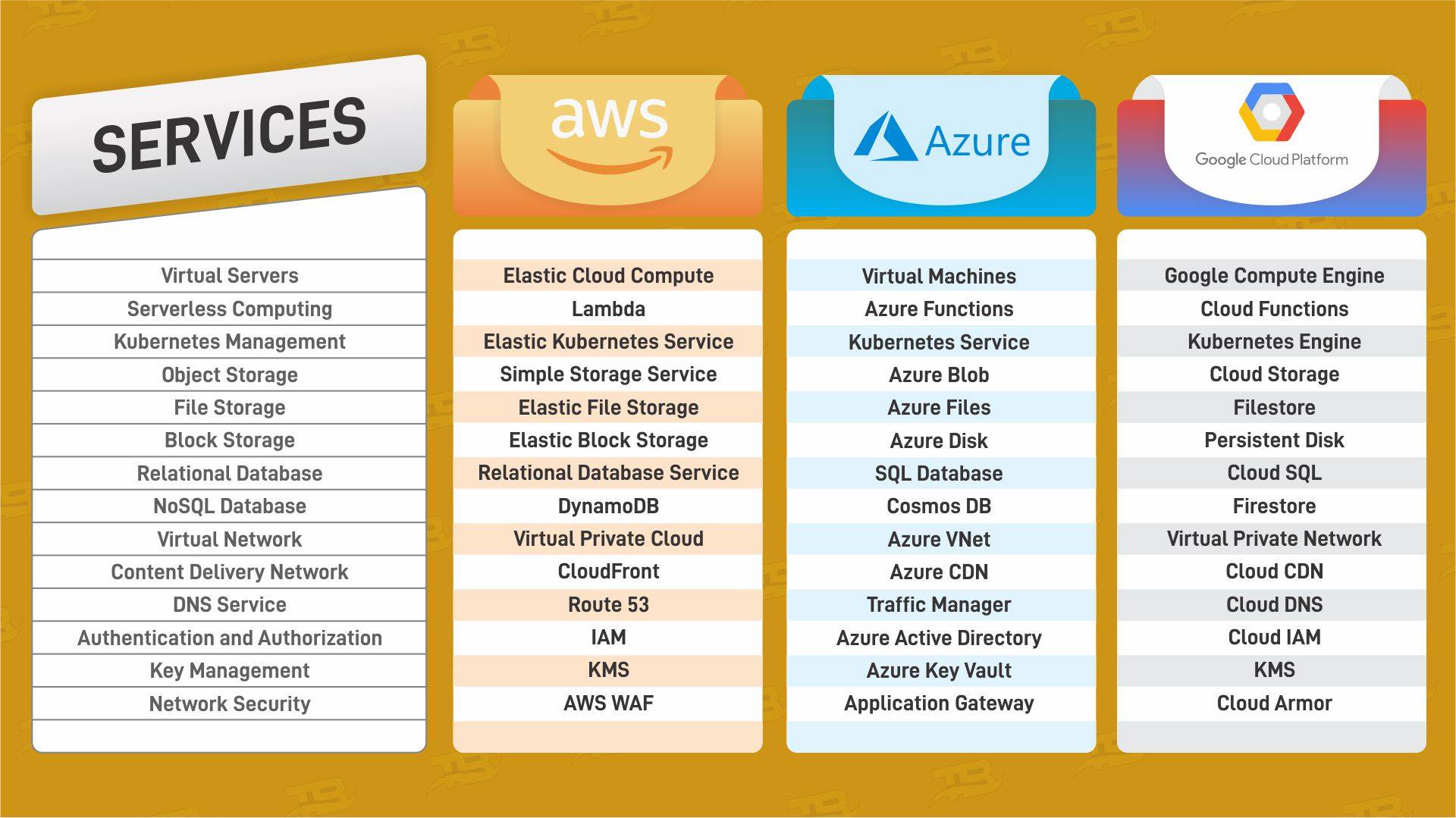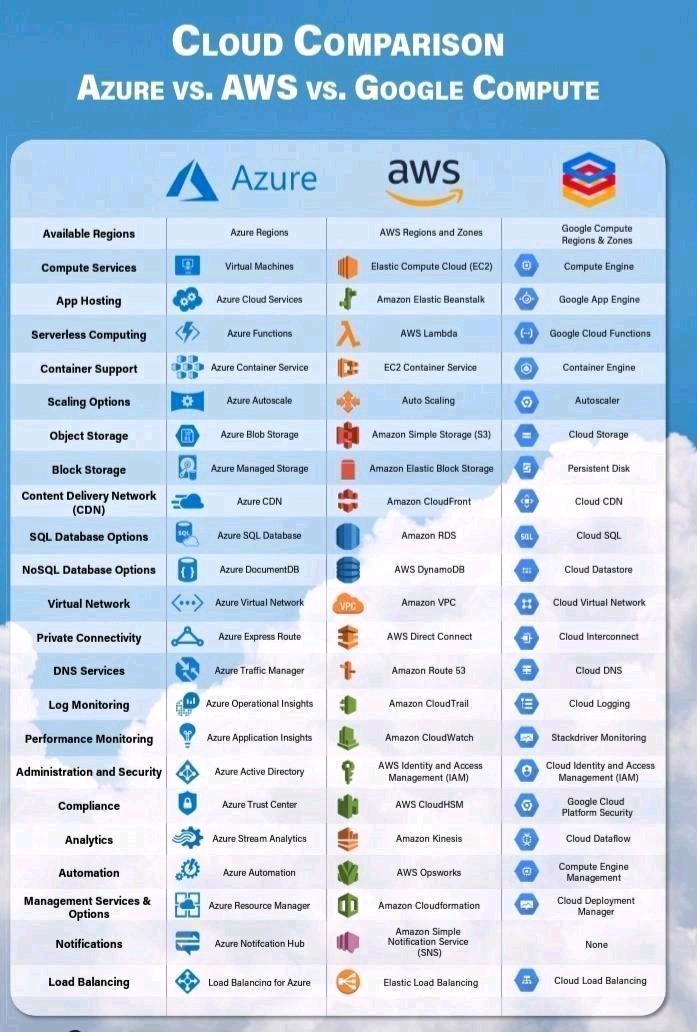Choosing Between AWS Services and Azure: A Comprehensive Guide
Cloud Computing Platforms: AWS Services and Azure Overview
Cloud computing platforms AWS Services and Azure are two of the most popular services for businesses seeking to leverage the benefits of cloud computing. AWS Services, launched by Amazon in 2006, is the leading cloud computing platform, offering a wide range of services, including computing, storage, database, and networking. Azure, launched by Microsoft in 2010, is a growing competitor in the cloud computing market, providing similar services and integrating well with Microsoft’s existing product offerings. When deciding between AWS Services and Azure, it is essential to compare and contrast the two services in various aspects, including features, pricing, and use cases.
Choosing Between AWS Services and Azure: A Comprehensive Guide
Cloud Computing Platforms: AWS Services and Azure Overview
AWS Services and Azure are two of the most popular cloud computing platforms available today. AWS Services, launched by Amazon in 2006, has been the dominant player in the market, while Azure, launched by Microsoft in 2010, has been rapidly gaining popularity. Both platforms provide on-demand computing resources, such as virtual machines, storage, databases, and networking, that can be accessed and managed through a web-based console or APIs.
Key Factors for Choosing Between AWS Services and Azure
Choosing between AWS Services and Azure depends on several factors, such as business needs, budget, scalability, and security. Before diving into the specific features of each platform, it is essential to understand these factors. For instance, if a company has a significant investment in Microsoft products and services, Azure may be the better choice due to its seamless integration with existing Microsoft software. On the other hand, if a company prioritizes cost-effectiveness and flexibility, AWS Services may be the better option due to its extensive range of services and pay-as-you-go pricing model.
Comparing AWS Services and Azure: Feature Analysis
When comparing AWS Services and Azure, it is essential to analyze their features and capabilities in various areas, such as computing, storage, database, and networking. For instance, AWS Services offers a wider range of computing services, such as Amazon EC2, Amazon Lambda, and AWS Fargate, while Azure provides a more integrated solution for Windows-based workloads. Similarly, AWS Services provides more flexible and scalable storage options, such as Amazon S3 and Amazon EBS, while Azure offers a more unified storage solution with Azure Blob Storage.
Comparing AWS Services and Azure: Pricing Structure
Both AWS Services and Azure offer pay-as-you-go pricing models, which allow customers to pay only for the resources they use. However, the cost structures and billing methods differ between the two platforms. For instance, AWS Services offers a more granular pricing model, which allows customers to optimize their costs by selecting the appropriate instance types and sizes. In contrast, Azure provides a more bundled pricing model, which includes a set of resources and services at a fixed price.
How to Migrate to AWS Services or Azure
Migrating to AWS Services or Azure requires a well-planned strategy that includes assessment, planning, migration, and testing. The first step is to assess the current IT infrastructure and applications to identify the components that can be migrated to the cloud. The next step is to plan the migration by selecting the appropriate tools and services and creating a migration plan. The migration process involves moving the data and applications to the cloud, while the testing phase ensures that the migrated components function as expected.
Real-World Use Cases for AWS Services and Azure
AWS Services and Azure have been successfully implemented in various industries, such as healthcare, finance, and retail, to provide scalable and secure infrastructure for big data analytics, machine learning, and IoT applications. For instance, AWS Services has been used to build a recommendation engine for a popular e-commerce website, while Azure has been used to develop a predictive maintenance solution for a manufacturing company.
Best Practices for Managing AWS Services and Azure
Managing AWS Services and Azure requires ongoing monitoring, optimization, and security to ensure the performance, availability, and security of the cloud infrastructure. Best practices for managing AWS Services and Azure include monitoring the usage patterns and costs, optimizing the resources and services, and implementing security measures, such as access control, encryption, and backup.
Choosing Between AWS Services and Azure: A Recap
Choosing between AWS Services and Azure requires a well-informed decision based on business needs, budget, scalability, and security. By comparing the features, pricing, and real-world use cases of each platform, businesses can make an informed decision and leverage the benefits of cloud computing to achieve their goals.
Choosing Between AWS Services and Azure: A Comprehensive Guide
Cloud Computing Platforms: AWS Services and Azure Overview
AWS Services and Azure are two of the most popular cloud computing platforms available today. AWS Services, launched by Amazon in 2006, has been the dominant player in the market, while Azure, launched by Microsoft in 2010, has been rapidly gaining popularity. Both platforms provide on-demand computing resources, such as virtual machines, storage, databases, and networking, that can be accessed and managed through a web-based console or APIs.
Key Factors for Choosing Between AWS Services and Azure
Choosing between AWS Services and Azure depends on several factors, such as business needs, budget, scalability, and security. Before diving into the specific features of each platform, it is essential to understand these factors. For instance, if a company has a significant investment in Microsoft products and services, Azure may be the better choice due to its seamless integration with existing Microsoft software. On the other hand, if a company prioritizes cost-effectiveness and flexibility, AWS Services may be the better option due to its extensive range of services and pay-as-you-go pricing model.
Comparing AWS Services and Azure: Feature Analysis
When comparing AWS Services and Azure, it is essential to analyze their features and capabilities in various areas, such as computing, storage, database, and networking. For instance, AWS Services offers a wider range of computing services, such as Amazon EC2, Amazon Lambda, and AWS Fargate, while Azure provides a more integrated solution for Windows-based workloads. Similarly, AWS Services provides more flexible and scalable storage options, such as Amazon S3 and Amazon EBS, while Azure offers a more unified storage solution with Azure Blob Storage.
Computing
AWS Services offers a wider range of computing services, including Amazon EC2, Amazon Lambda, and AWS Fargate. Amazon EC2 provides scalable computing capacity in the cloud, while Amazon Lambda allows users to run code without provisioning or managing servers. AWS Fargate, on the other hand, allows users to run containers without managing the underlying infrastructure.
Storage
AWS Services provides more flexible and scalable storage options, such as Amazon S3 and Amazon EBS. Amazon S3 offers object storage for data backup, archival, and analytics, while Amazon EBS provides block-storage for use with Amazon EC2 instances. Azure, on the other hand, offers a more unified storage solution with Azure Blob Storage, which offers object storage for unstructured data.
Database
AWS Services offers a more diverse set of database services, including Amazon RDS, Amazon DynamoDB, and Amazon Redshift. Amazon RDS offers relational database services for SQL Server, Oracle, MySQL, and PostgreSQL, while Amazon DynamoDB offers a NoSQL database service for web, mobile, gaming, and IoT applications. Amazon Redshift, on the other hand, offers a data warehousing service for analytics.
Networking
Azure offers a more integrated solution for networking, including Azure Virtual Network, which allows users to create private networks in the cloud. AWS Services, on the other hand, offers Amazon VPC, which provides similar functionality.
Comparing AWS Services and Azure: Pricing Structure
Both AWS Services and Azure offer pay-as-you-go pricing models, which allow customers to pay only for the resources they use. However, the cost structures and billing methods differ between the two platforms. For instance, AWS Services offers a more granular pricing model, which allows customers to optimize their costs by selecting the appropriate instance types and sizes. In contrast, Azure provides a more bundled pricing model, which includes a set of resources and services at a fixed price.
How to Migrate to AWS Services or Azure
Migrating to AWS Services or Azure requires a well-planned strategy that includes assessment, planning, migration, and testing. The first step is to assess the current IT infrastructure and applications to identify the components that can be migrated to the cloud. The next step is to plan the migration by selecting the appropriate tools and services and creating a migration plan. The migration process involves moving the data and applications to the cloud, while the testing phase ensures that the migrated components function as expected.
Real-World Use Cases for AWS Services and Azure
AWS Services and Azure have been successfully implemented in various industries, such as healthcare, finance, and retail, to provide scalable and secure infrastructure for big data analytics, machine learning, and IoT applications. For instance, AWS Services has been used to build a recommendation engine for a popular e-commerce website, while Azure has been used to develop a predictive maintenance solution for a manufacturing company.
Best Practices for Managing AWS Services and Azure
Managing AWS Services and Azure requires ongoing monitoring, optimization, and security to ensure the performance, availability, and security of the cloud infrastructure. Best practices for managing AWS Services and Azure include monitoring the usage patterns and costs, optimizing the resources and services, and implementing security measures, such as access control, encryption, and backup.
Choosing Between AWS Services and Azure: A Recap
Choosing between AWS Services and Azure requires a well-informed decision based on business needs, budget, scalability, and security. By comparing the features, pricing, and real-world use cases of each platform, businesses can make an informed decision and leverage the benefits of cloud computing to achieve their goals.
Choosing Between AWS Services and Azure: A Comprehensive Guide
Cloud Computing Platforms: AWS Services and Azure Overview
AWS Services and Azure are two of the most popular cloud computing platforms available today. AWS Services, launched by Amazon in 2006, has been the dominant player in the market, while Azure, launched by Microsoft in 2010, has been rapidly gaining popularity. Both platforms provide on-demand computing resources, such as virtual machines, storage, databases, and networking, that can be accessed and managed through a web-based console or APIs.
Key Factors for Choosing Between AWS Services and Azure
Choosing between AWS Services and Azure depends on several factors, such as business needs, budget, scalability, and security. Before diving into the specific features of each platform, it is essential to understand these factors. For instance, if a company has a significant investment in Microsoft products and services, Azure may be the better choice due to its seamless integration with existing Microsoft software. On the other hand, if a company prioritizes cost-effectiveness and flexibility, AWS Services may be the better option due to its extensive range of services and pay-as-you-go pricing model.
Comparing AWS Services and Azure: Feature Analysis
When comparing AWS Services and Azure, it is essential to analyze their features and capabilities in various areas, such as computing, storage, database, and networking. For instance, AWS Services offers a wider range of computing services, such as Amazon EC2, Amazon Lambda, and AWS Fargate, while Azure provides a more integrated solution for Windows-based workloads. Similarly, AWS Services provides more flexible and scalable storage options, such as Amazon S3 and Amazon EBS, while Azure offers a more unified storage solution with Azure Blob Storage.
Comparing AWS Services and Azure: Pricing Structure
Both AWS Services and Azure offer pay-as-you-go pricing models, which allow customers to pay only for the resources they use. However, the cost structures and billing methods differ between the two platforms. AWS Services offers a more granular pricing model, which allows customers to optimize their costs by selecting the appropriate instance types and sizes. In contrast, Azure provides a more bundled pricing model, which includes a set of resources and services at a fixed price.
Cost Structures
AWS Services and Azure have different cost structures. AWS Services charges based on the resources and services used, while Azure charges based on the resources and services consumed, along with the number of transactions. For instance, AWS Services charges for Amazon S3 storage based on the amount of data stored, while Azure charges for Azure Blob Storage based on the amount of data stored and the number of transactions.
Billing Methods
AWS Services and Azure have different billing methods. AWS Services offers on-demand, reserved, and spot instances, while Azure offers pay-as-you-go, reserved instances, and capacity-based billing. For instance, AWS Services offers reserved instances for customers who commit to using a specific amount of computing resources for a fixed term, while Azure offers capacity-based billing for customers who commit to using a specific amount of computing resources for a fixed term.
Pricing Calculators
Both AWS Services and Azure offer pricing calculators to estimate the costs of using their platforms. AWS Services offers the Total Cost of Ownership (TCO) calculator, while Azure offers the Azure Pricing Calculator. These calculators allow customers to estimate the costs of using the platforms based on their specific needs and usage patterns.
How to Estimate Costs
To estimate the costs of using AWS Services or Azure, customers should consider their specific needs and usage patterns. For instance, customers should consider the type and amount of resources and services they plan to use, the duration of usage, and the location of the resources and services. Customers should also consider any additional costs, such as data transfer fees, that may apply.
How Pricing Can Vary
The pricing for AWS Services and Azure can vary based on several factors, such as the type and amount of resources and services used, the duration of usage, and the location of the resources and services. For instance, the pricing for Amazon S3 storage can vary based on the storage class and the location of the storage, while the pricing for Azure Blob Storage can vary based on the storage tier and the number of transactions.
Real-World Use Cases for AWS Services and Azure
AWS Services and Azure have been successfully implemented in various industries, such as healthcare, finance, and retail, to provide scalable and secure infrastructure for big data analytics, machine learning, and IoT applications. For instance, AWS Services has been used to build a recommendation engine for a popular e-commerce website, while Azure has been used to develop a predictive maintenance solution for a manufacturing company.
Best Practices for Managing AWS Services and Azure
Managing AWS Services and Azure requires ongoing monitoring, optimization, and security to ensure the performance, availability, and security of the cloud infrastructure. Best practices for managing AWS Services and Azure include monitoring the usage patterns and costs, optimizing the resources and services, and implementing security measures, such as access control, encryption, and backup.
Choosing Between AWS Services and Azure: A Recap
Choosing between AWS Services and Azure requires a well-informed decision based on business needs, budget, scalability, and security. By comparing the features, pricing, and real-world use cases of each platform, businesses can make an informed decision and leverage the benefits of cloud computing to achieve their goals.
How to Migrate to AWS Services or Azure
Migrating to a cloud computing platform is a significant undertaking that requires careful planning and execution. Here is a step-by-step guide on how to migrate to AWS Services or Azure:
Assessment
The first step in migrating to AWS Services or Azure is to assess your current IT infrastructure and identify the applications and workloads that are suitable for migration. This involves evaluating the performance, scalability, and security requirements of each application and determining whether they can be met by the target cloud platform.
Planning
Once you have identified the applications and workloads that will be migrated, the next step is to create a detailed migration plan. This plan should include the following:
- A timeline for the migration, including milestones and deadlines.
- A migration strategy, such as lift-and-shift, re-architecture, or re-platforming.
- A risk management plan, including contingency measures and disaster recovery procedures.
- A budget and cost estimate for the migration, including any ongoing costs for maintenance and support.
Migration
The migration itself involves several steps, including:
- Preparing the target cloud environment, such as setting up virtual machines, storage, and networking.
- Deploying the applications and workloads to the target cloud environment, either manually or using automated tools.
- Testing the applications and workloads to ensure they are functioning correctly and meeting performance and security requirements.
- Cutting over to the target cloud environment, including updating DNS records and redirecting traffic.
Testing
After the migration, it is essential to perform thorough testing to ensure that the applications and workloads are functioning correctly and meeting performance and security requirements. This includes load testing, security testing, and functional testing.
A well-planned migration strategy is essential for minimizing downtime and disruption during the migration process. It is also important to ensure that the target cloud platform can meet the performance, scalability, and security requirements of the applications and workloads being migrated. By following these steps, you can ensure a successful migration to AWS Services or Azure.
Real-World Use Cases for AWS Services and Azure
AWS Services and Azure are both powerful cloud computing platforms that offer a wide range of features and services. Here are some real-world use cases for AWS Services and Azure, highlighting the benefits and challenges of each platform:
AWS Services Use Cases
AWS Services is a popular choice for businesses that need to process large volumes of data, such as media and entertainment companies, e-commerce retailers, and financial services firms. Here are some examples of how businesses have successfully implemented and leveraged AWS Services:
- Media and Entertainment: Media companies use AWS Services to process and deliver video and audio content to millions of users worldwide. For example, Netflix uses AWS Services to stream videos to more than 150 million subscribers in over 190 countries.
- E-commerce: E-commerce retailers use AWS Services to handle peak traffic and ensure fast and reliable performance during high-traffic events, such as Black Friday and Cyber Monday. For example, Shopify uses AWS Services to support more than 1 million online stores and process millions of transactions every day.
- Financial Services: Financial services firms use AWS Services to process and analyze large volumes of financial data in real-time, such as stock trades and market data. For example, Fidelity Investments uses AWS Services to support its trading platforms and provide real-time market data to millions of investors worldwide.
Azure Use Cases
Azure is a popular choice for businesses that need to build and deploy custom applications and workloads, such as software development firms, IT services providers, and manufacturing companies. Here are some examples of how businesses have successfully implemented and leveraged Azure:
- Software Development: Software development firms use Azure to build, test, and deploy custom applications and workloads in a scalable and secure environment. For example, Adobe uses Azure to support its Creative Cloud platform and provide cloud-based services to millions of users worldwide.
- IT Services: IT services providers use Azure to provide managed services and solutions to their clients, such as cloud backup and disaster recovery. For example, Dell Technologies uses Azure to provide cloud-based backup and disaster recovery services to its clients worldwide.
- Manufacturing: Manufacturing companies use Azure to optimize their operations and improve their supply chain management. For example, Rolls-Royce uses Azure to support its digital manufacturing initiatives and improve its engineering and design processes.
Both AWS Services and Azure offer a wide range of features and services that can benefit businesses in various industries. By understanding the strengths and weaknesses of each platform and evaluating their specific business needs, budget, scalability, and security requirements, businesses can make an informed decision and choose the right cloud computing platform for their needs.
Best Practices for Managing AWS Services and Azure
Managing a cloud computing platform requires ongoing monitoring, optimization, and security to ensure the performance, availability, and security of the platform. Here are some best practices for managing AWS Services and Azure:
Monitoring
Monitoring is critical for identifying and resolving issues before they impact the performance and availability of the platform. Here are some best practices for monitoring AWS Services and Azure:
- Use built-in monitoring tools, such as Amazon CloudWatch and Azure Monitor, to monitor the performance and availability of the platform.
- Set up alerts and notifications to notify you of any issues or anomalies in the system.
- Monitor the usage patterns and trends to optimize the performance and cost of the platform.
Optimization
Optimization is essential for ensuring the performance and cost-effectiveness of the platform. Here are some best practices for optimizing AWS Services and Azure:
- Use auto-scaling features to automatically adjust the capacity of the platform based on the workload.
- Use reserved instances or spot instances to save costs on computing resources.
- Optimize the storage and database resources to ensure the performance and cost-effectiveness of the platform.
Security
Security is critical for protecting the platform and the data stored in it. Here are some best practices for securing AWS Services and Azure:
- Use multi-factor authentication (MFA) to secure access to the platform.
- Use encryption to protect the data stored in the platform.
- Regularly patch and update the platform to ensure the latest security features and fixes are applied.
By following these best practices, businesses can ensure the performance, availability, and security of their cloud computing platform, whether they choose AWS Services or Azure. It is also important to have a well-planned migration strategy and to consider the business needs, budget, scalability, and security requirements when making a choice.
Choosing Between AWS Services and Azure: A Recap
Choosing between AWS Services and Azure is a critical decision for businesses looking to leverage the benefits of cloud computing. Both platforms offer a wide range of features and services, but they have their strengths and weaknesses. Here are some key points to consider when making a choice:
Business Needs
Business needs should be the primary factor in choosing a cloud computing platform. Consider the specific requirements of the business, such as computing power, storage capacity, database support, and networking capabilities. Both AWS Services and Azure offer a wide range of services that can meet the needs of most businesses, but it is essential to evaluate which platform offers the best fit for the specific requirements.
Budget
Budget is another critical factor to consider when choosing a cloud computing platform. Both AWS Services and Azure offer flexible pricing models that allow businesses to pay only for the resources they use. However, the pricing structures are different, and businesses should carefully evaluate the costs associated with each platform. It is also important to consider the long-term costs of the platform, including maintenance and support.
Scalability
Scalability is a key benefit of cloud computing, and businesses should choose a platform that can scale to meet their needs. Both AWS Services and Azure offer auto-scaling features that allow businesses to automatically adjust the capacity of the platform based on the workload. However, the scalability capabilities of each platform are different, and businesses should carefully evaluate which platform offers the best fit for their specific requirements.
Security
Security is critical for protecting the platform and the data stored in it. Both AWS Services and Azure offer robust security features, including multi-factor authentication, encryption, and regular patching and updates. However, the security capabilities of each platform are different, and businesses should carefully evaluate which platform offers the best fit for their specific requirements.
In conclusion, choosing between AWS Services and Azure requires careful consideration of business needs, budget, scalability, and security. Both platforms offer a wide range of features and services, but they have their strengths and weaknesses. By evaluating the specific requirements of the business and carefully comparing the features and pricing of each platform, businesses can make an informed decision and choose the right cloud computing platform for their needs. Ultimately, the key to success is to choose a platform that can meet the current and future needs of the business and provide a solid foundation for growth and innovation.



